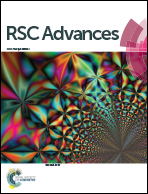Promiscuity of inhibitors of human protein kinases at varying data confidence levels and test frequencies
Abstract
More than 141 000 inhibitors of human kinases and their activity data were assembled to perform an in-depth analysis of inhibitor promiscuity (single- versus multi-kinase activity) at varying activity data confidence levels. For ∼20% of these inhibitors, it was also possible to consider test frequency and inactivity information. Only small subsets of highly promiscuous inhibitors were identified. Nearly 95% of more than 45 000 inhibitors with high-confidence data were only active against one or at most two kinases. At decreasing data confidence levels, more than 92 000 kinase inhibitors were on average active against two kinases. When taking all activity information without any restrictions into account, the mean promiscuity degree of kinase inhibitors was less than four and notably biased by small numbers of highly promiscuous inhibitors. Even under these conditions, more than 70% of all inhibitors were active against a single kinase. There was only small-scale progression of inhibitor promiscuity when data confidence criteria were iteratively removed during the analysis. Furthermore, the majority of inhibitors that were tested against 10 to 20 different kinases were only active against a single kinase. The results of our activity data-driven analysis indicate that promiscuity of kinase inhibitors cannot generally be assumed. Many inhibitors retain single-kinase activity at decreasing data confidence criteria or increasing test frequency. Hence, on the basis of currently available data, many kinase inhibitors are selective, which is an important aspect for drug development.



 Please wait while we load your content...
Please wait while we load your content...